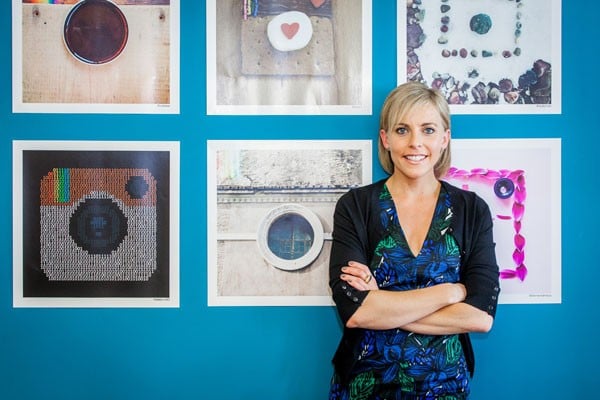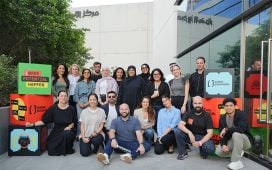1) Yahoo! exits Middle East
December marked the end of an era as Yahoo! announced it would be closing its Dubai office next year – its last base in the Middle East. Campaign broke the news online the same day as Dubai bosses told the 50 remaining staff they would be out of a job by April as the Silicon Valley internet giant attempts to ‘streamline its business’ following years of pitiful growth. The end came six years after the company bought Arabic social network Maktoob.com for close to $170 million. However, since 2009, the once 400-strong team has seen layoff after layoff with office closures in Amman and Cairo paving the way for the Middle Eastern network’s ultimate fate.
2) Alarab TV pulled hours after launch
Eagerly anticipated 24-hour news channel Alarab TV went on air on February 1 – and then mysteriously disappeared 18 hours later. Owned by billionaire Saudi businessman Prince Alwaleed bin Talal, the pan-Arab channel was launched with the promise of politically independent news coverage. One of its first guests was a prominent Bahraini opposition figure, who discussed the cancelling of 72 Bahrainis’ citizenship. Cue a commercial break, a notice citing “technical and administrative reasons”, and then, blackout. Some 10 months later, the channel has never resurfaced and the closest the media ever got for an explanation was an unattributed source in Bahrain daily Akhbar Alkhaleej stating the channel wasn’t “adhering to the norms prevalent in Gulf countries”.
3) Al Jazeera’s American dream in disarray
Internal conflicts within Al Jazeera’s United States office reached bubbling point in May with the ousting of chief executive officer Ehab Al Shihabi. Indeed, it is said the New York-based newsroom erupted in cheers upon hearing the news of his departure. Bosses at the Qatari-backed network swiftly replaced him with Al Anstey, who had served as managing director of the Doha-based Al Jazeera English since 2010. Al Shihabi’s firing was preceded by months of job cuts and staff agitation that culminated in a $15 million discrimination lawsuit and the loss of three female executives.
4) Instagram and Twitter launch in Dubai
Three years after Facebook first opened its Middle East hub in Dubai’s Internet City, rival Twitter and Facebook’s adopted child Instagram made 2015 the year to follow suit. Instagram joined Facebook at its Business Central Towers at the same time it universally rolled out its advertising platform. Dubai also took centre stage as Instagram celebrated its five- year anniversary in a typically #Instamoment manner at the Burj al-Arab during the same week in September. Twitter’s venture into the Middle East market was greeted with much less of a fanfare.
5) Snapchat popularity on the rise
Two years ago, the ever- entrepreneurial Facebook tried to buy the then rising social media star Snapchat for $3 billion. Snapchat said ‘no’. And now the app’s 25-year-old founder and chief executive Evan Spiegel must be sniggering all the way to the bank as Snapchat’s value reached in excess of $16 billion this year. Now reported to have around 200 million monthly active users and 100 million daily active users, it was no surprise global media companies were quick to jump on the snapping bandwagon after the app launched its ‘Discover’ option in July.
6) People meters introduced in Saudi Arabia
Eons behind the rest of the world, the Saudi Media Measurement Company (SMMC) finally announced it would launch its first television people meter project in April. As the Gulf Cooperation Council’s most important market, it seemed staggering such a measurement like the United Arab Emirates’ tview hadn’t been implemented much sooner. At the time, it was reported it would be revealed over the course of 2015, although few details have emerged since.
7) Periscope goes down
It was hailed as the wonder app that would revitalise Twitter’s flagging appeal. But, eight months after Twitter bought Periscope for figures quoted between $50 million and $100 million, the live- video sharing feature suddenly went down in the United Arab Emirates. Unfortunate timing when the social media platform was in the process of opening its new Dubai base. Twitter acknowledged that the app had been blocked in the country. However, one week of Twitter ranting later, Periscope miraculously appeared again.
8) Apple launches Apple News
Among the plethora of announcements at Apple’s Worldwide Developers Conference in June was the introduction of a news application. Apple formally abandoned its four-year attempt to dominate digital editions of magazines and newspapers through its Newsstand platform. Instead, the Apple News app arrived as an automatic download with the iOS 9, launched in September. It gives users access to content from publishers such as ESPN, The New York Times, Condé Nast, Time Inc and The Daily Mail all in one place.
9) MediaMonks launches in Dubai
Digital production company MediaMonks set up an office in Dubai in March and roped in digital hand John Davey as senior digital producer. It was MediaMonks’ sixth office after Amsterdam, London, Los Angeles, New York and Singapore with the company stating that the Dubai operation would house eight people by the end of the year. Amongst its work this year was the launch of Jumeirah Inside with Google – a Google Street View-like experience that travels through 23 hotels using 360-degree video, photography and various interactive features.
10) LinkedIn launches in Arabic
In March, LinkedIn finally launched an Arabic offering. With 14 million users across the Middle East and North Africa, it sought to increase its user base in the region and provide a more relevant experience for Arabic speakers. LinkedIn launched an office in Dubai in 2012











